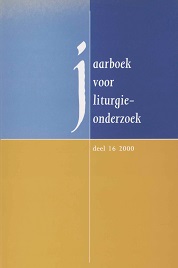Het ware licht. Theologie van de liturgie in de media
Abstract
From the second half of the past century the church has been confronted with a new phenomenon: liturgy in the mass media. Especially German theologians, such as Romano Guardini, Karl Rahner, H.-B. Meyer and J.B. Metz, have raised some serious questions with respect to the broadcasting of the Eucharist. In their view, the media break the privacy and intimacy of the celebrating community of faith, they ‘profanize’ or violate the mystery and make it impossible to participate in the celebration. The theological discussions have accompanied the development of liturgical broadcastings, leading to a double practice. On the one hand there is the practice of so-called Gottesdienstübertragungen, in which the media transmit the liturgical celebration with minimal influence; on the other hand there is the practice of the Fernsehgottesdienst, in which the media try to re-shape the celebration in a way that suits the communicative situation of the mass media. With respect to this double practice the author seeks to formulate a theology illuminating the presence of liturgy in the media. First, the author responds to the German theological critique as mentioned above, stating that it is finally our body, which is to keep and shelter the mystery and which makes a true participation possible. Next, he writes that the aim of the church to broadcast their liturgical celebration is of a pastoral concern: the church wants to be near to those who are unable to come to the church. But finally, this pastoral concern demands that the presence of the church is a physical and tangible presence. The pastoral and liturgical communication is essentially based on real presences. The author thinks that the gap between media and liturgy can only be bridged by those real presences, i.e. by the people who go from the one to the other. Therefore, the author proposes to view the mediated celebrations as a way which, starting from a medial participation, leads to a physical participation. By describing the gap between media and liturgy as a gap between an imaginative reality and a sacramental reality - an opposition that is organized in the logical square -, the author sees a possibility to move from the one to the other. And only a human being who is real in every respect can move from one reality to another.


